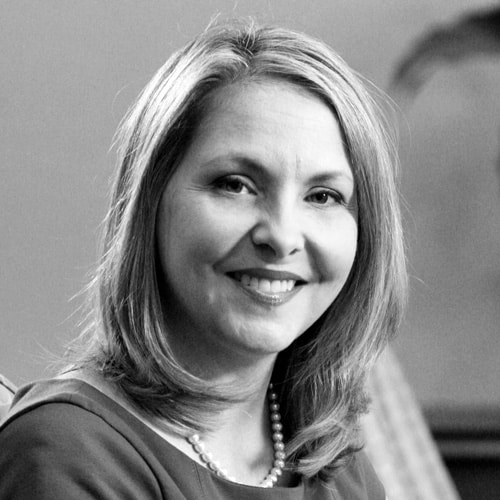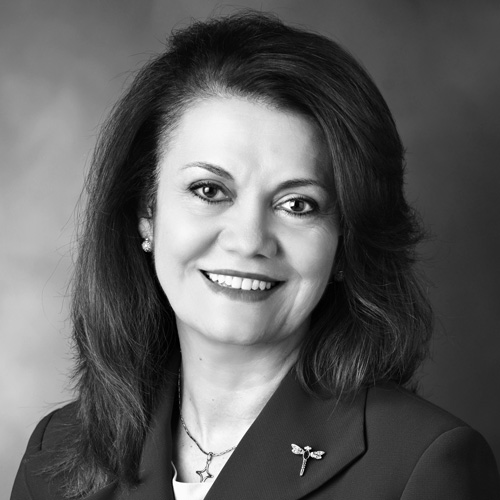Leslie Russo, vice president of human resources for North American Partners in Anesthesia (NAPA), has shepherded the organization’s human resources programs and initiatives for more than nine years. She’s been involved in both the for-profit and nonprofit sectors of the healthcare industry for twenty years. With a degree in psychology and an MBA with an emphasis in management, she brings a full array of skills and experience to her role as a trusted member of NAPA’s executive leadership team.

NAPA is the leading single-specialty anesthesia management company in the United States. It has a well-recognized reputation for quality, excellence, and a focus on patient safety. It partners with hospitals, ambulatory surgical centers, and physicians, providing anesthesia and complete perioperative care services. Founded in 1986, NAPA now offers its services to more than one hundred healthcare facilities, including seventy hospitals in nine states.
NAPA invests in a variety of groundbreaking initiatives designed to maximize efficiencies and drive patient safety at the facilities it serves. The company’s belief in continuous improvement results in employing best practices that benefit its customers as well as its employees. This approach has allowed human resources to build on its already strong foundation to develop truly innovative programs and services. Russo has recently spearheaded a new program, and her enthusiasm is palpable.
“NAPA SELECT is probably the most exciting initiative I have worked on in my career as an HR professional,” Russo says. “It is, in many ways, a culmination of my HR experience.” SELECT stands for Seeking Elite Leaders through Education, Commitment, and Training. This initiative addresses the distinct differences and needs for leadership development within the healthcare industry.
There’s always training and development that takes place within a human resources department, she acknowledges, but this plan stands apart. “To create an entire course curriculum and to develop a whole new way of approaching leadership development is not something every professional gets the chance to do,” she explains.
NAPA’s team recognizes the need to cultivate leaders. “There are a lot of challenges around healthcare reform as well as value-based care,” Russo says. “We want to make sure that as an organization we’re committed to helping our leaders develop skills that will allow them to respond effectively to those challenges and capitalize on opportunities.”
Russo notes there are unique issues in leadership development involving clinicians. Education within residency or nursing programs doesn’t often focus on leadership development, optimal leadership style, strategic persuasion, effective hiring, and navigating the political and healthcare environment, she says.
“Anesthesiologists and CRNAs [certified registered nurse anesthetists] come in and they’re expected to be great clinicians, right from the start,” Russo says. “And they are. But there’s so much more that’s needed to work successfully in the healthcare environment.” She sees it as her responsibility to help clinicians navigate organizational roles outside of their critically important and time-consuming positions in the operating room.
“Anything I can do to help them perform optimally—not just in the operating room but throughout their professional lives—is something we think is of paramount importance.”
Russo believes it will make a difference for them. “Not only in their ongoing careers, but also just within our own NAPA organization, there’s an opportunity for progressive leadership development,” she says. “That’s something that differentiates us from a lot of other anesthesia companies—we have a very custom-tailored program that’s anesthesia-specific for these future leaders.”
The program began with a kickoff orientation in July 2015. Within the program there are three Learning Development Institutes (LDI). Each LDI will focus on cultivating a different skill set. Each comprises a full weekend of immersive learning for approximately eighteen students.
The students have been carefully chosen. “We were very diligent about selecting the first cohort,” Russo says. “It had to be those that had shown high potential as future leaders or that had shown initiative within their own clinical sites.” Individuals who agreed to be mentors nominated students.
That mentorship spirit is the core of the leadership initiative, according to Russo. “It was very important to us that we weren’t just teaching students but that they had ongoing support,” she says. “We want students to have a mentor—someone to guide and help them with their ongoing project plans, as well as someone that could be a sounding board for discussions outside of the classroom.”
In addition to the LDIs, every month there are two virtual classroom sessions in which case studies, project plans, or reading materials are discussed. “We understand that they’re in the operating room 90 percent of their time,” Russo says. “Taking time away from their families and clinical duties in order to be a part of this is something that we recognize and appreciate.”
Russo is equally excited about another aspect of the leadership training, which includes emotional intelligence surveys, skills assessments, and 360-degree feedback loops. “We want students to understand where their opportunities may lie as well as to capitalize on the positive characteristics that they’re already bringing to their roles,” she explains.
The vice president of human resources also keeps her eye on the ensuring NAPA’s core values are front and center while she drives innovative HR initiatives. It’s her way of making sure that the primary mission of NAPA—the delivery of exemplary anesthesia and perioperative services—is served. “I don’t want our clinicians to be worrying about other things, I want them to be focusing one hundred percent on the patient in front of them,” she says.
Yet, Russo understands that clinicians also need to interact effectively with administrations, hospital staff, and their fellow anesthesiologists. “Anything I can do to help them perform optimally—not just in the operating room but throughout their professional lives—is something we think is of paramount importance,” she says.

